Not sure what to put on a salad? Here are the best and the easiest salad topping ideas so that you can enjoy healthy salad sides or main dishes all week long. From proteins and veg to crunchy toppers and dressings, you’ll have no shortage of delicious salad toppings to choose from.
Be sure to make a batch of Meal Prep Salads along with some key toppings, so that your Lunchtime Meal Prep comes together quickly and easily. Or if you’re serving a crowd, check out our Tips for Serving a Salad Bar.
Want to save this post?
Enter your email below and get it sent straight to your inbox. Plus, I’ll send you budget recipes and money-saving tips every week!
Some folks say that salads are boring. Some say that they never taste fresh. Some say they don’t know how to make one.
Well folks, today’s the day to change that!
The secret is in the salad toppings.
Salads are good, but what really makes one great is the salad toppings. Whether you like things plain and simple or piled on high, having your favorite salad toppings really does transform the meal.
Why Make Salads
They can be healthy. Salads are said to have a number of health benefits, especially where increasing fiber and nutrients are concerned. Salads are an easy way to add more fruits and vegetables to your diet. This Orange and Avocado Salad is amazing!
They are fresh and crisp. When you want to add texture to a meal, add a salad. With crisp lettuce and crunchy salad toppings, it can really round out the flavors in your menu. Be sure to try the Greek Wedge Salad for a fun mix of textures.
They are delicious. When you load on the salad toppings you love, you transform a simple bed of lettuce into an absolute feast. This Tossed Salad is packed with flavor.
They are easily customizeable. Salad is a great kid friendly meal, especially when you provide a number of salad toppings for kids to choose from.
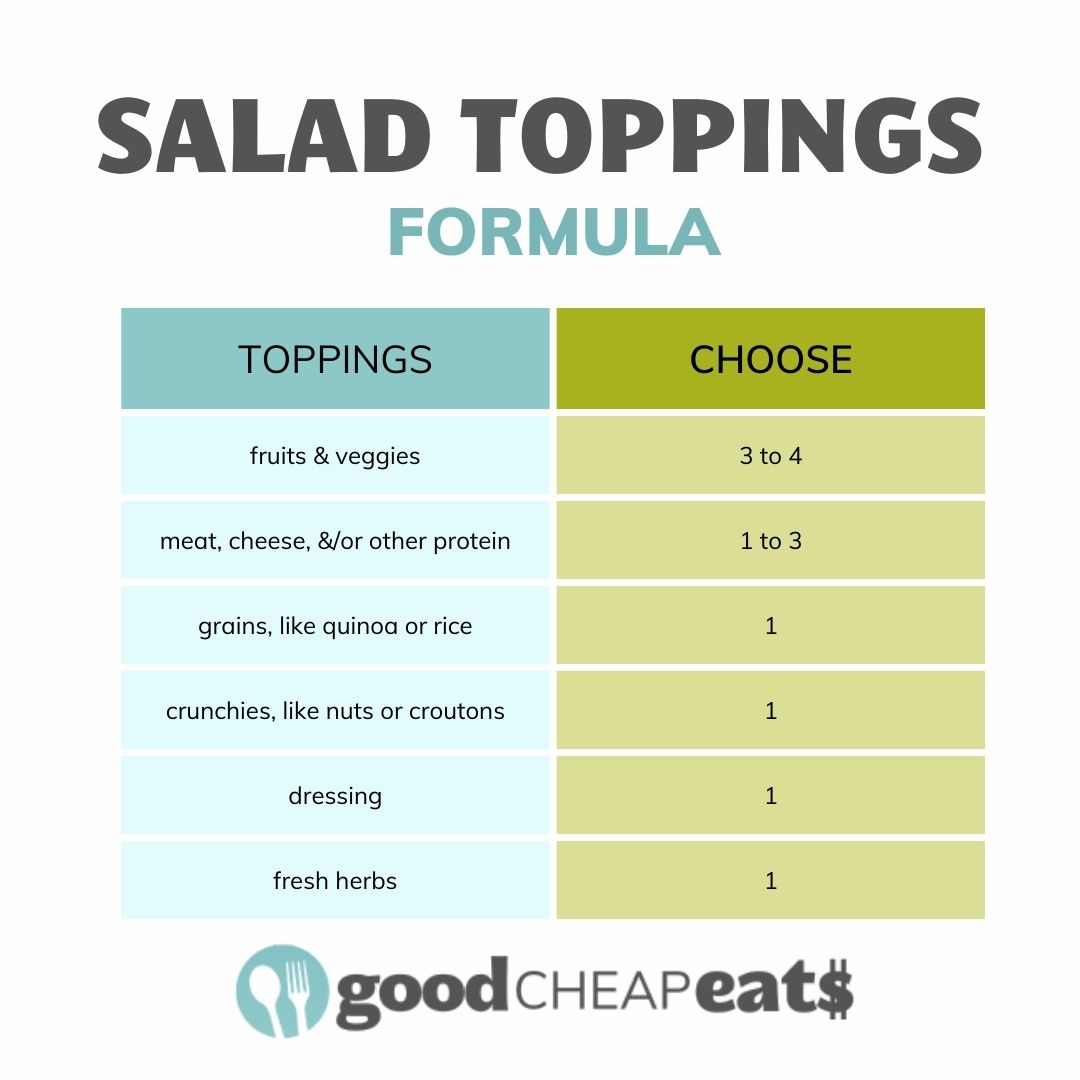
What Makes a Good Salad
A good salad is based on fresh ingredients and salad toppings you enjoy. It’s not soggy or boring. It’s not dry; neither is it drenched in dressing. It’s crisp and cold and packed with flavor.
A good salad leaves you wanting to eat salad again.
There is a wide world of ingredients out there for you to explore. If you only know salad as limp iceberg with a chunk of watery tomato and sad cucumber, then know that there’s a lot of exciting stuff out there for you to try.
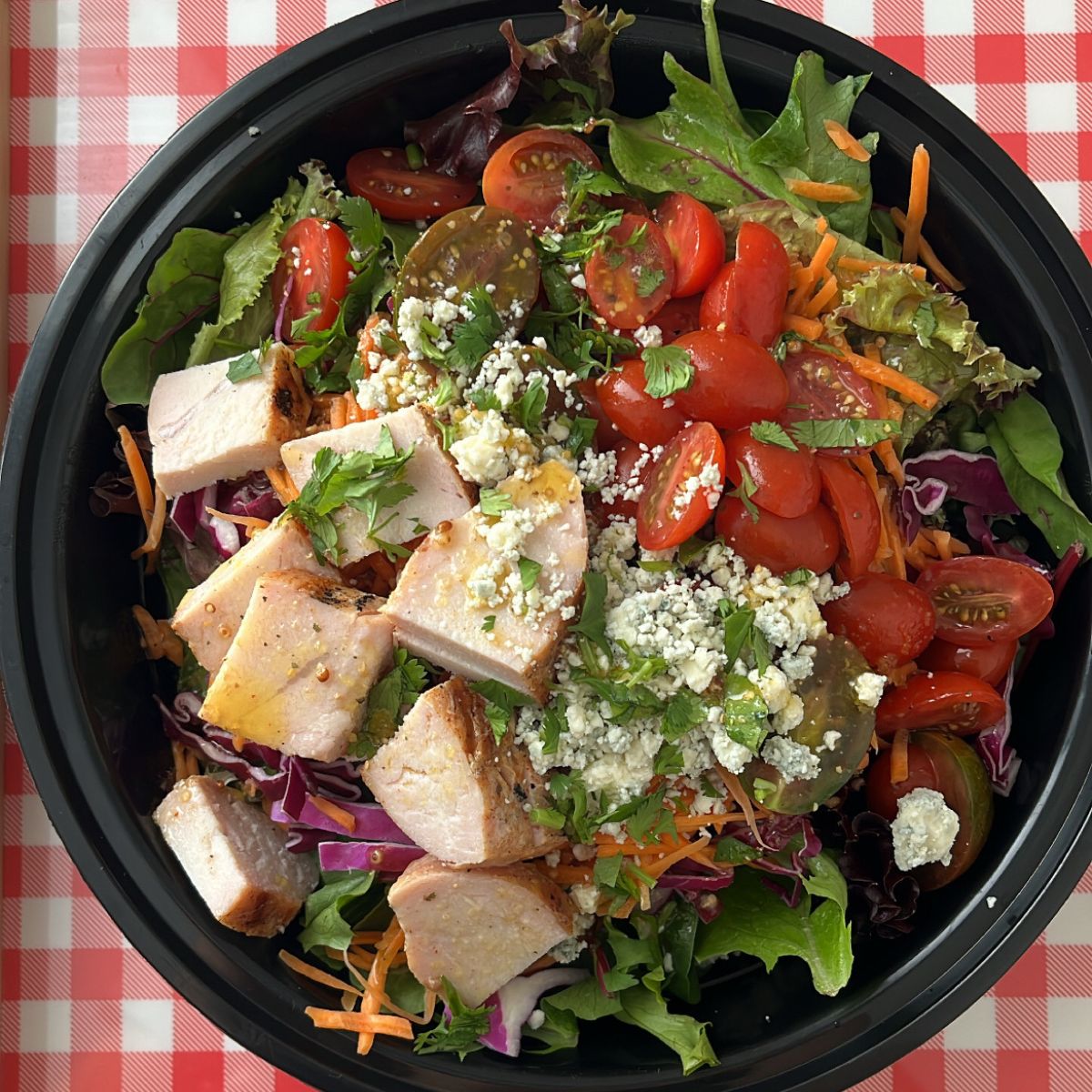
A Winning Salad Formula
A winning salad formula is to assemble a bed of greens and then top it with 3 to 4 fruits and veggies + 1 to 3 proteins + 1 grain + 1 crunchy topping + 1 dressing + 1 fresh herb.
This formula is delicious and works for mixing and matching salad toppings in lots of ways. Be sure to scroll down for all the best options!
Consider these different combinations of flavors piled on a bed of greens:
- steak, fajita veggies, jack cheese, and a lime-cilantro dressing
- crispy chicken tenders, hard boiled eggs, grape tomatoes, cheddar cheese, sunflower seeds, and ranch salad dressing
- rotisserie chicken, raspberries, goat cheese, and pecans with this amazing Raspberry Vinaigrette
- sautéed chicken, black beans, avocado, pumpkin seeds, and lime dressing for an out of this world Santa Fe Salad
- grilled chicken, croutons, parmesan cheese, and Caesar dressing
- meatballs, cucumbers, tomatoes, hummus, tzatziki, and pita chips
There are so many different ways to build a salad, you could go in a different direction every day of the year and never get bored. Ready to get started?
Tips for Success
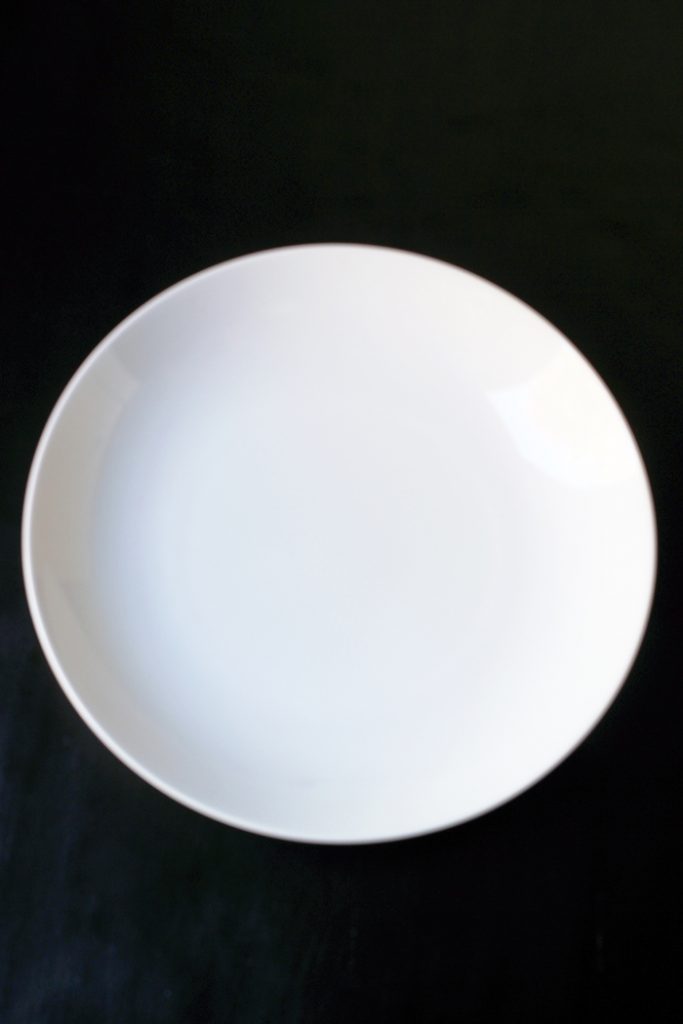
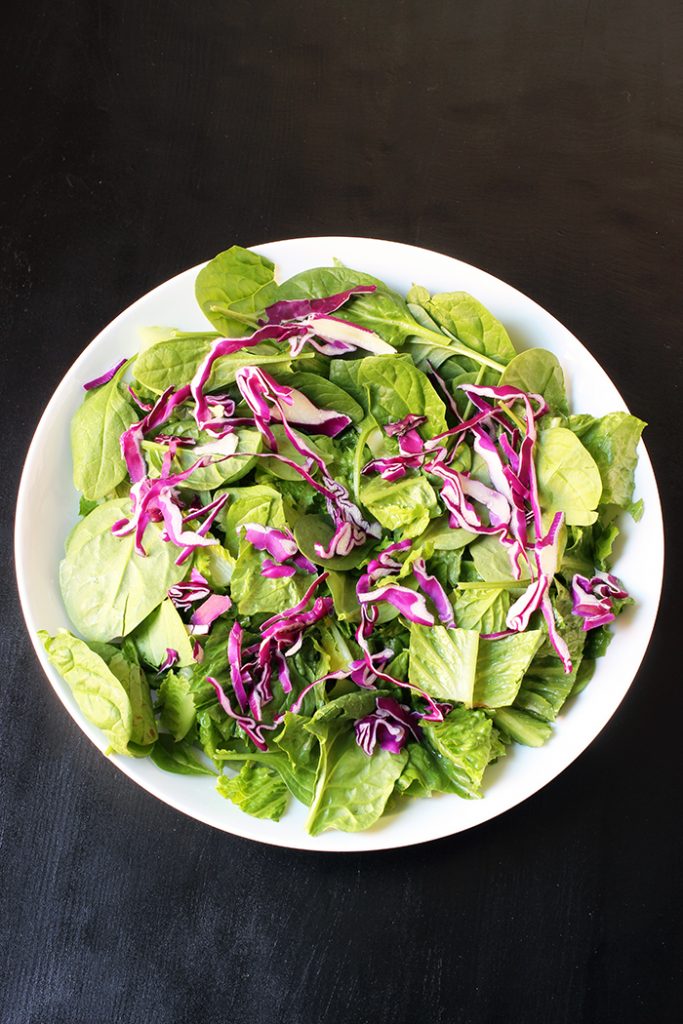
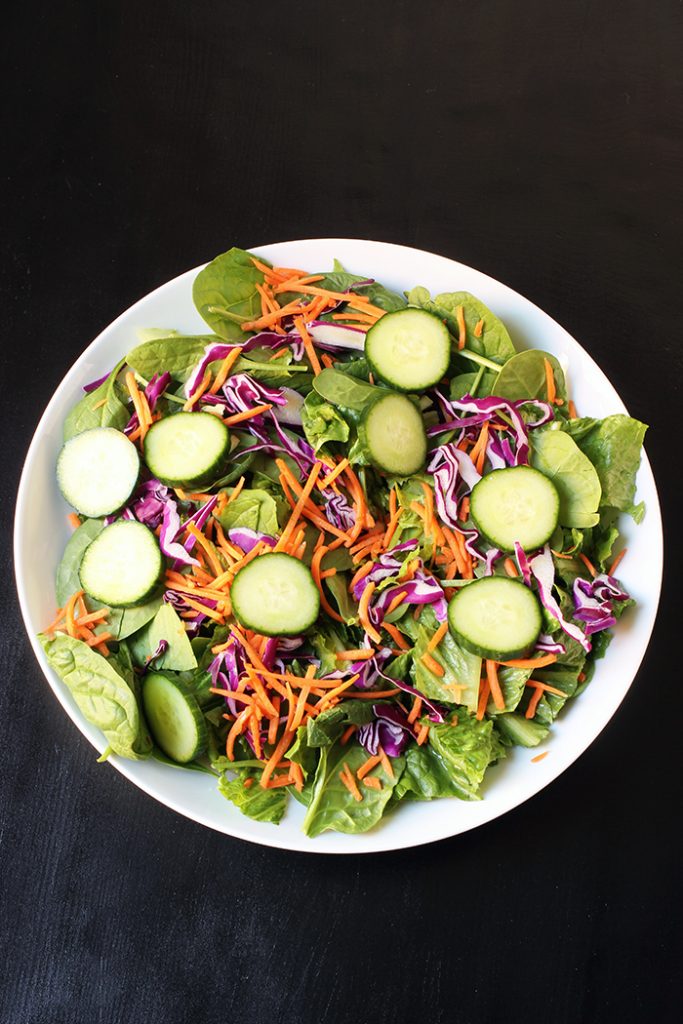
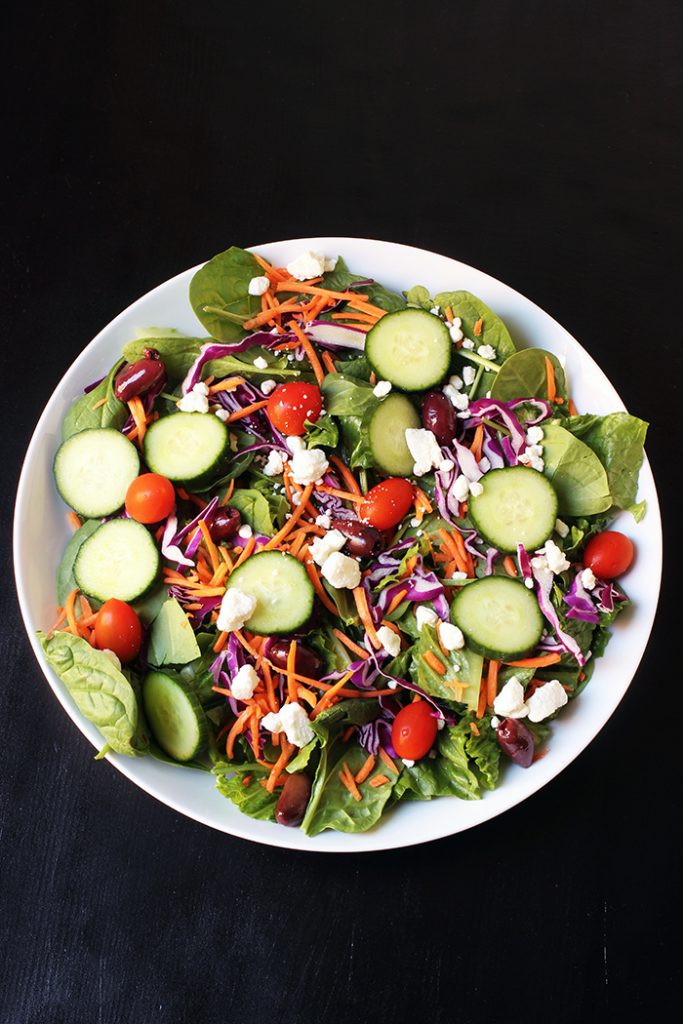
Start with a big bowl or platter.
You want to make sure that your serving platter or bowl is large enough to hold all the salad ingredients as well as allow room for you to toss the salad with the dressing.
If you’re serving several people, this may mean a large salad bowl or platter. If you’re making a salad just for one, a small mixing bowl or pie plate works well.
Lay a bed of greens.
The base of the salad is the lettuce or greens.
When I was growing up, that meant iceberg. But farmers’ markets and modern grocery stores have opened the culinary horizons of lettuce and greens over the years. You likely have a choice of any of these:
- romaine
- green leaf
- red leaf
- butter lettuce
- iceberg
- frisee
- baby spinach
- baby kale
- shredded cabbage
- radicchio
- chicory
Vary the colors and textures if you can. Experiment until you find the combinations and flavors you like the best.
Pile on the salad toppings.
Salad add-ins are what give the salad its character. And honestly? Anything goes! Salad toppings include fruits, vegetables, cheese, nuts, meats, eggs, and all kinds of dressings.
The Best Salad Toppings
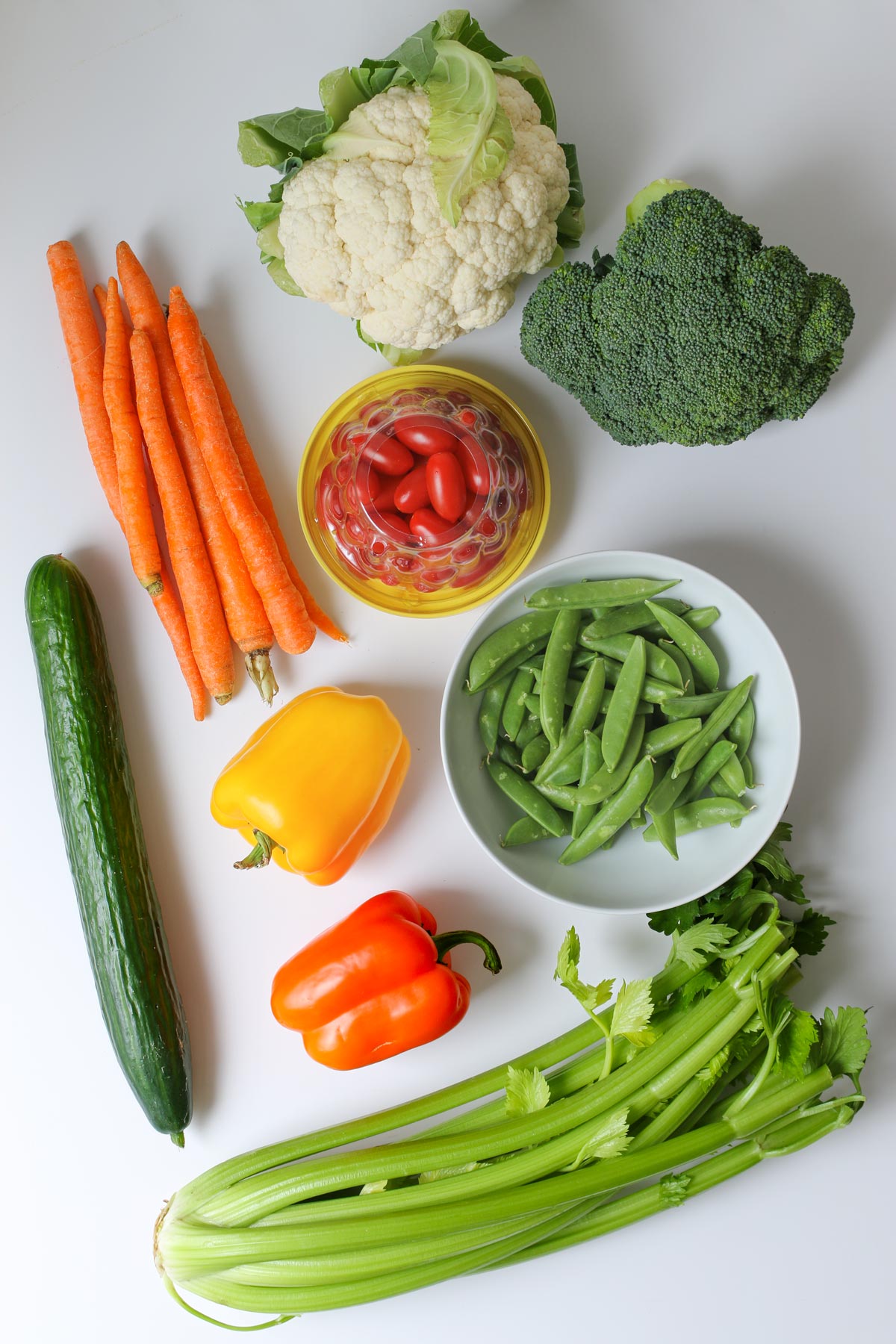
Fruit and Vegetable Salad Toppings
You can go with fresh fruit or dried fruit, fresh vegetables or roasted ones. Try different combinations until you discover your favorite salad toppings.
Consider these options:
- fresh fruit, such as berries, chopped apple or pear
- dried fruit such as dried cranberries, raisins, apricots, or cherries
- tomatoes, chopped or whole grape/cherry variety
- shredded or chopped carrots
- shredded cabbage
- chopped celery
- cooked potatoes
- broccoli and cauliflower florets
- roasted vegetables
- steamed green beans
- corn kernels
- sweet peas or edible pea pods
- chopped, steamed green beans
- diced or sliced avocado
- chopped or sliced bell peppers
- sliced cucumbers
- chopped green onion or pickled red onion
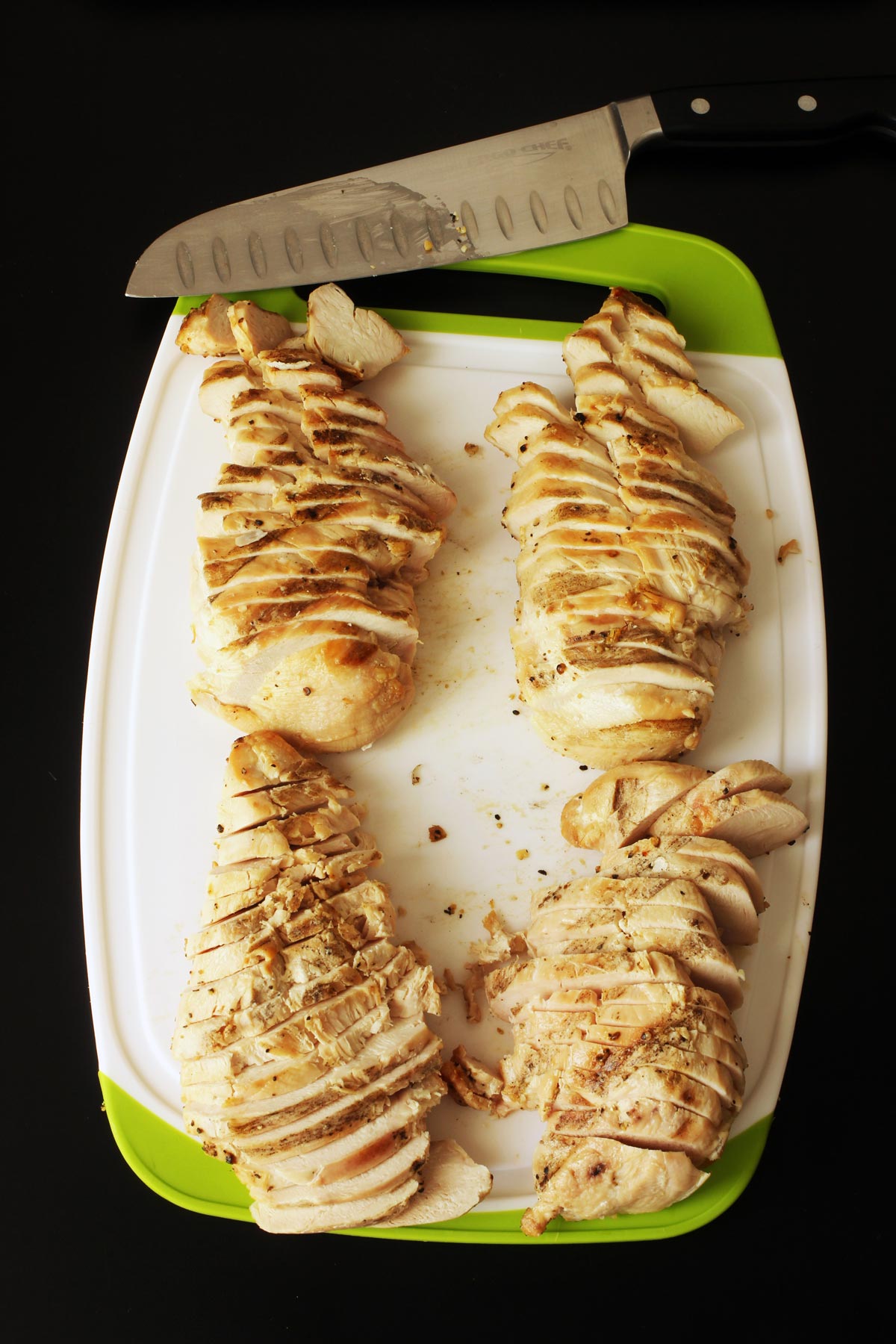
Protein Salad Toppings.
I think historically there’s been a misconception that a salad can’t be filling. We’ll have to blame the pear half-scoop of cottage cheese combo of the 70’s for that! Adding protein to your salads will make them more like meals and give you sustenance throughout the day.
Salad proteins can vary quite a bit. Check out all your options!
- cheese: shredded, crumbled, or cubed – good ones include feta cheese, blue cheese crumbles,
- eggs: hard boiled, soft boiled, poached, or fried
- beans and legumes: garbanzo, kidney, pinto, black, lentil, favas
- meats: cooked chicken, beef, pork, turkey, ham, or bacon – don’t forget leftover cooked meat (like taco meat or crispy, chopped bacon) or get a rotisserie chicken.
- seafood: cooked or canned tuna, shrimp, fish
- soy: edamame, tofu, tempeh, or seitan
- nuts and seeds: pecans, walnuts, peanuts, cashews, almonds, pepitas, sunflower seeds
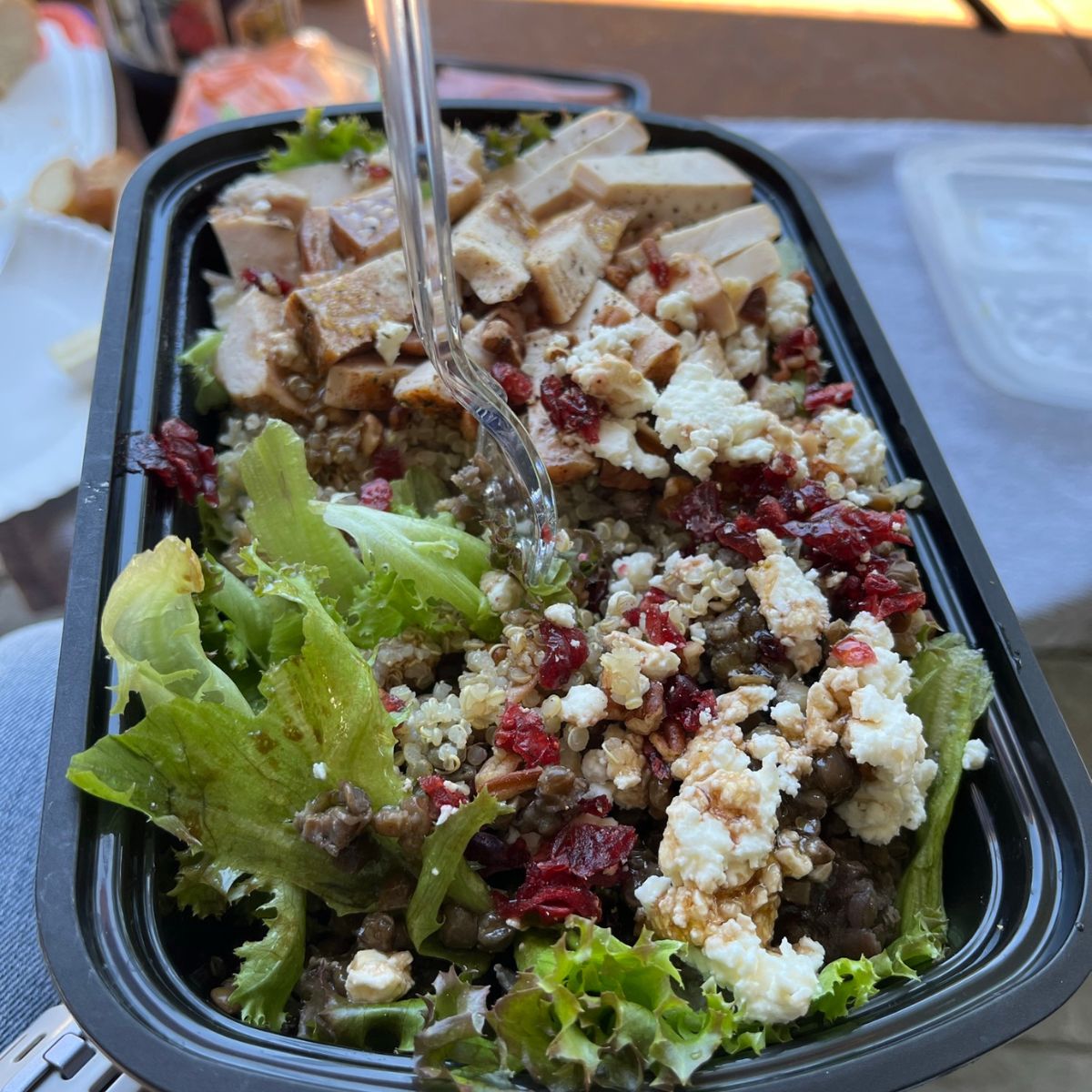
Grains for Topping Salads
Cooked whole grains are a delicious addition to green salads. Be sure to cool them before adding them to the salad. These healthy salad toppings include:
- rice
- quinoa
- barley
- farro
- pasta
- tabouli made from cracked wheat is a great salad topping
Crunchy Salad Toppings
Varying the texture of your salad is key to making it great.
- croutons
- broken chips
- chopped garlic bread
- chopped pita chips or bagel chips
You can try these homemade salad toppers: Cheese and Garlic Croutons or Maple Spiced Pepitas for some extra pizzazz. Top your plate with some kind of crunch like Homemade Croutons.
Fresh Herbs
Don’t forget the power of fresh herbs to bring flavor and kick to your salads. Rinse in cool water, pat dry, and chop to add a lovely topping to salads.
These fresh herbs go very well in salads:
- basil
- mint
- cilantro
- dill
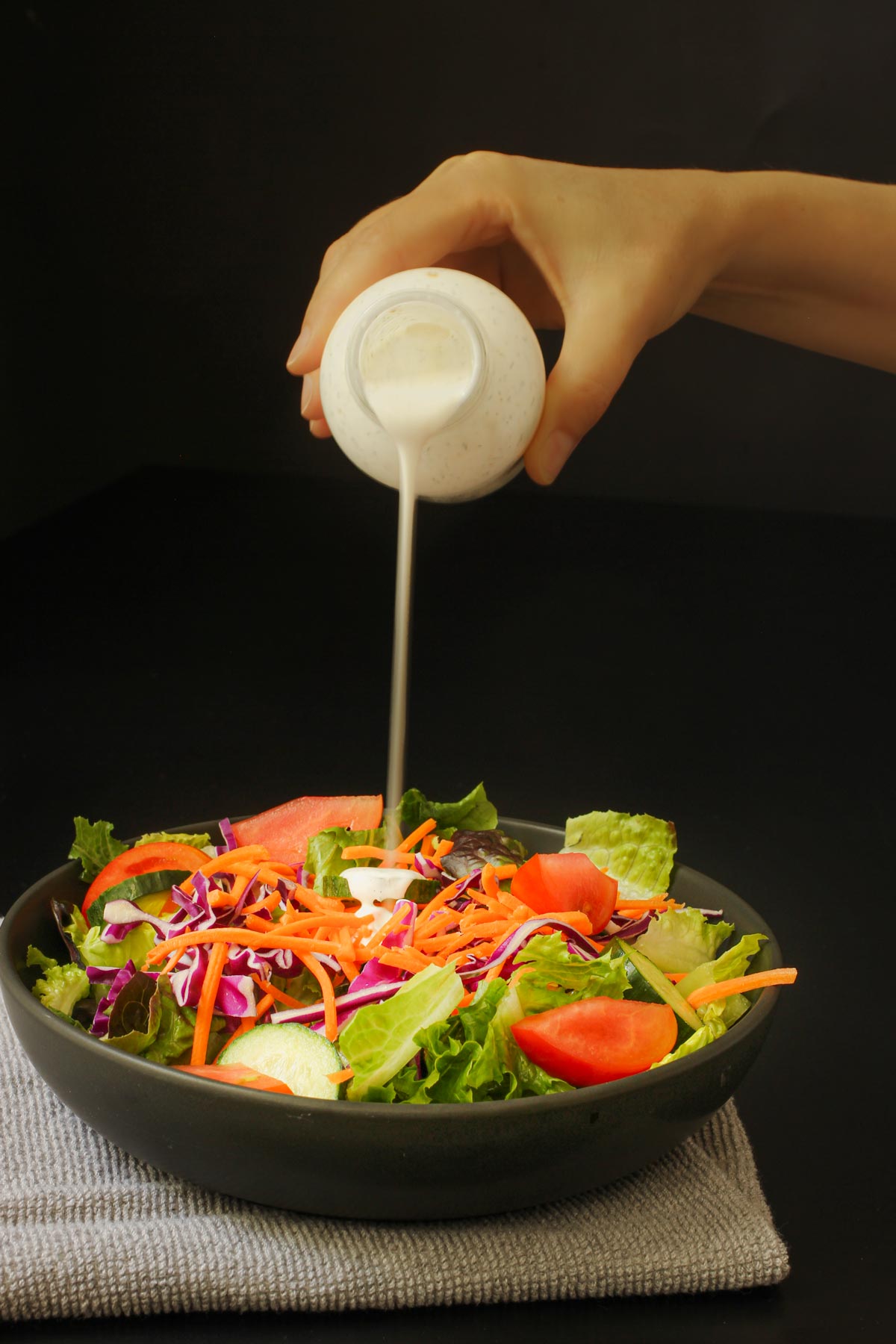
Salad Dressings
You can use a bottled dressing or drizzle on some olive oil and vinegar, but I find that homemade dressings are easy to make and add amazingly good flavor. It’s not hard at all to mix up a dressing.
Be sure to try one of these:
FAQs
Almost every week I make my favorite meal prep salads. They make my meals so much easier. Prepared food is good for up to four days. Undressed, chopped vegetables can last even longer.
The key to keeping your dish fresh all week is to dry the ingredients well and leave off the salad toppings that might make the salad soggy, like cut tomatoes or cucumbers. Add them right before serving instead. Soggy leads to rapid decay, so pat everything dry and store it in an airtight container in the fridge. Don’t add the dressing until serving.
Homemade — without the dressing or very wet salad toppings — should last at least four days. If you’ve included cut tomatoes or dressing, you will want to consume it within a few hours.
I’ve known of folks to put leftover salad in soup or eat a dressed salad the next day, but it will suffer from loss of taste and texture.
A general rule of thumb is to choose a few fruits and veggies, a protein, a cheese, a nut or other crunchy topping, like croutons, and then a fresh herb and dressing. You can mix and match all kinds of salad toppings. Think about what you like in your favorite foods and consider adding them together.
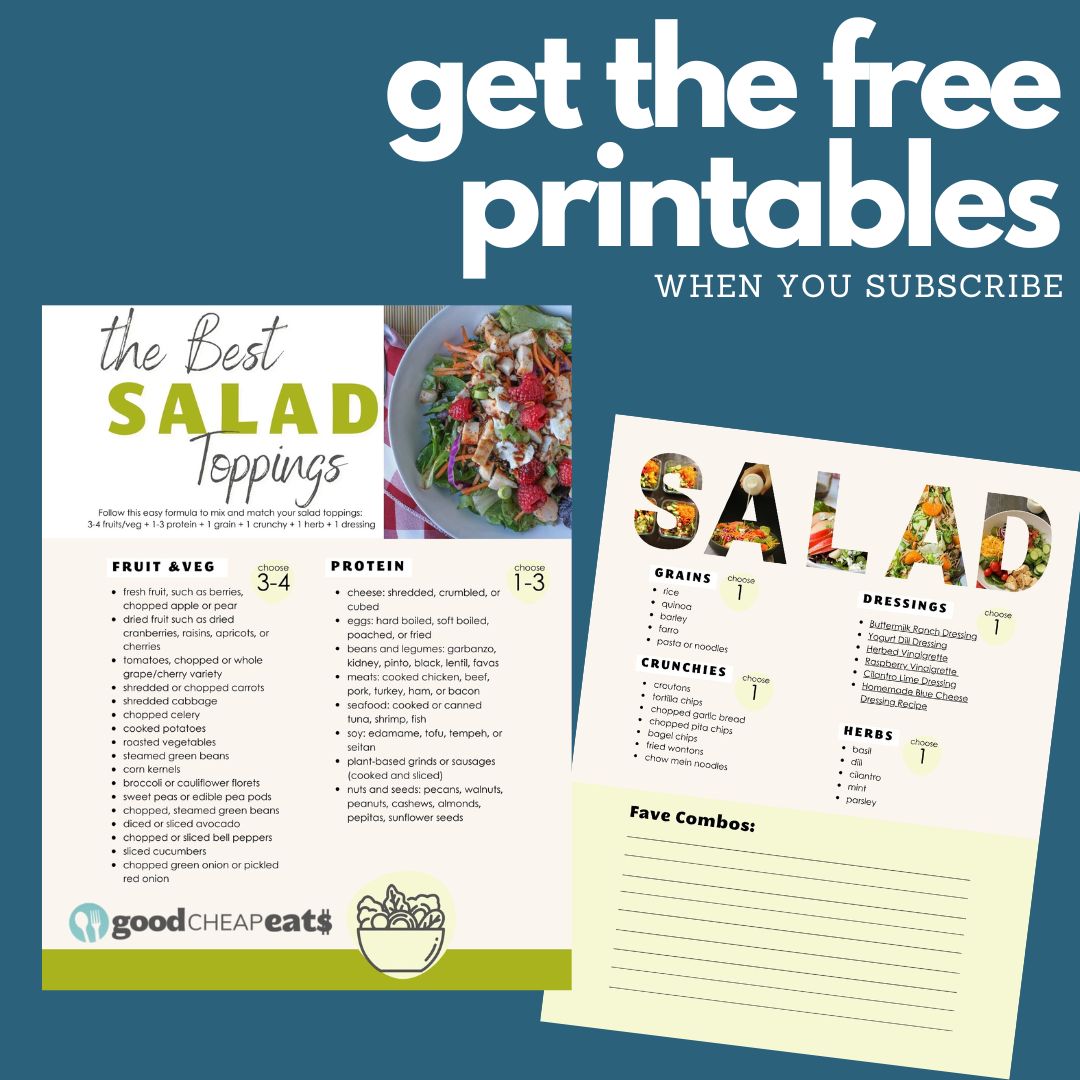
Subscribe to our mailing list and get access to our free resource library, including this easy Salad Toppings printable list.
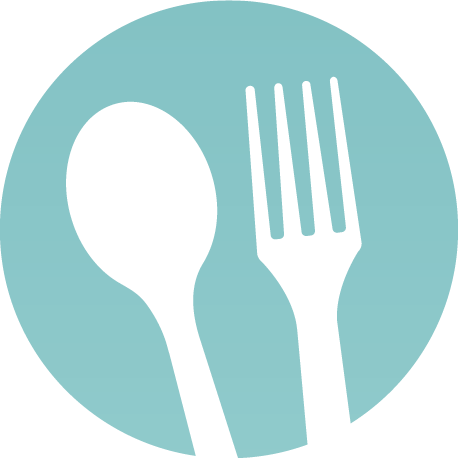
Tell us what you think!
We love to hear your experiences with Good Cheap Eats. Click the STARS on the recipe card or leave a STARRED comment to let us know what you think of the recipe.

The Best Salad Toppings
Ingredients
- 1 batch meal prep salad
- 1 to 4 types of chopped fruit and veggies such as berries, apples, pears, carrots, tomatoes, onions, roasted vegetables, cabbage, and more
- 1 to 3 types of proteins such as cooked meats, beans, cheese, and nuts
- 1 cups cooked grain such as rice, quinoa, barley, farro, or noodles
- 1 type of crunchy salad toppings such as croutons, pita chips, tortillas, wonton crisps, or chow mein noodles
- ½ cup salad dressing
- ¼ cup chopped fresh herbs such as basil, mint, cilantro, or dill
Instructions
- Add the fruits and vegetables to the meal prep salads.1 batch meal prep salad, 1 to 4 types of chopped fruit and veggies
- Divide the proteins, grains, and crunchy salad toppings to the salads.1 to 3 types of proteins, 1 cups cooked grain, 1 type of crunchy salad toppings
- Drizzle with salad dressing and sprinkle with fresh herbs.½ cup salad dressing, ¼ cup chopped fresh herbs
Notes
Nutrition
This post was originally published on June 26, 2010. It has been updated for content and clarity.


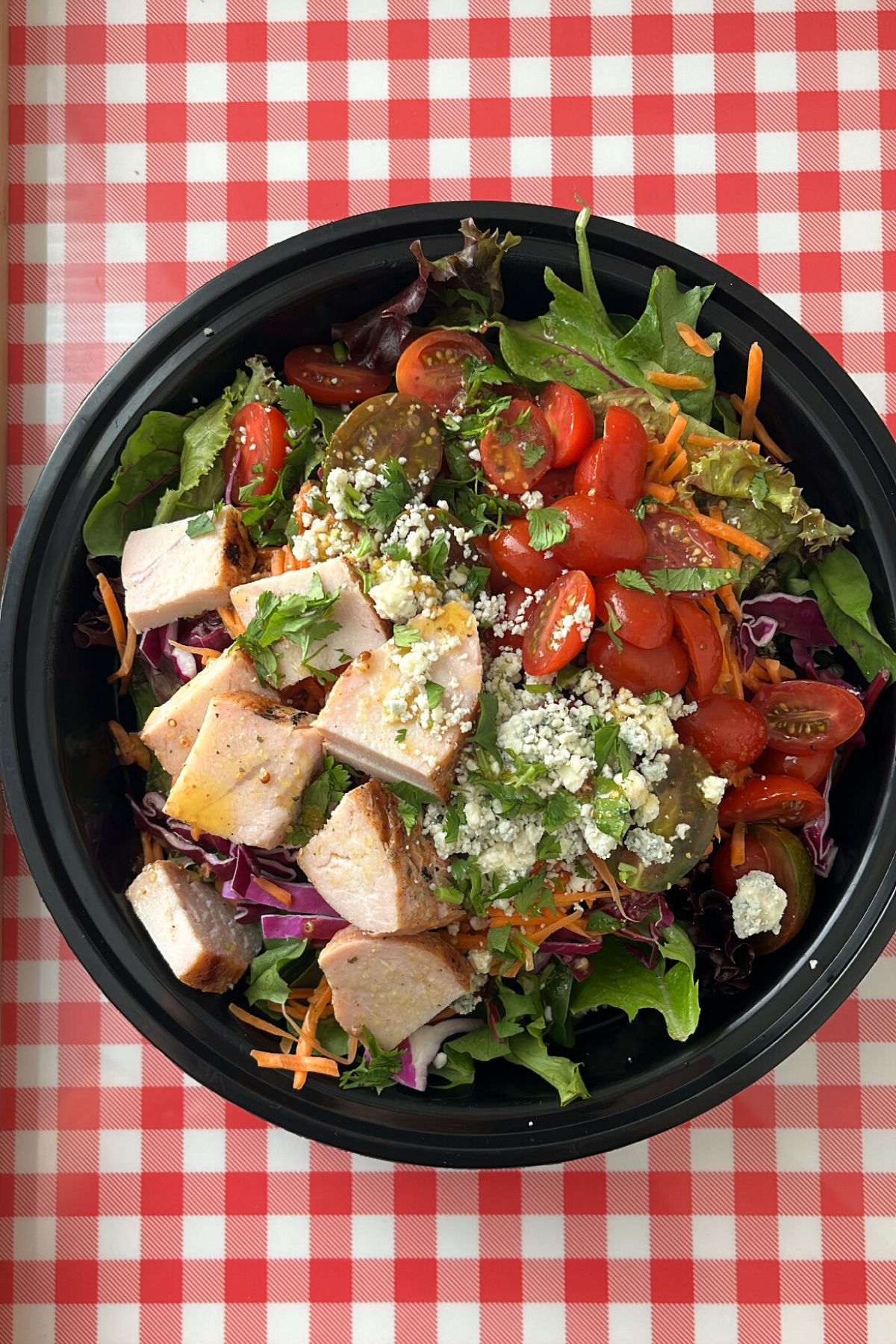
Leslie
Jessica, in Fridays, I’d like to add shrimp to my salad, do you have a method you recommend for cooking shrimp to salad
Jessica Fisher
This shrimp recipe is good. You can cook it on the grill or in a skillet.
Karen Weger
Instead of making individual salads, each week I make up a large bowl of my “salad base”. It’s a combination of different greens (red leaf, green leaf, romaine, spinach, baby kale), shredded red cabbage, shredded carrots and diced red onion. Each of us can grab a bowl, fill it with the base and make our own salads very quickly. I usually have a selection of proteins, nuts, boiled eggs, veggie to pick from in the refrigerator. This has helped my meal planning – especially since we eat a lot of salads!
Jessica Fisher
Sounds like a great strategy, Karen!
Roberta
Heading out to the garden today to harvest lettuce, bell pepper, and radishes for our dinner salad (I’ll also add carrots from the store and maybe celery if it’s salad-worthy). There’s really nothing like freshly harvested veggies. 😉
Jessica Fisher
What a great garden you have! I need some lessons!
Roberta
Hubs is the gardener of the family. It’s his stress relief. You could probably do some container gardening (and nurseries and hardware stores are still open, at least for now). I’m sure there are YouTube videos that would show you how to go about it. Get the kids involved and make a science lesson out of it. 🙂
Mary P
An easy way to prepare your salad in advance is to do it in a Mason jar. Start with dressing on the bottom, then add other ingredients in order of wettest to driest, ending with your greens. Keep your crunchy bits separate. To serve, turn the jar upside down over a bowl or plate, and add your crunchy bits. Keeps wonderfully in the refrigerator and everything is right together to make it easy to grab and go.
Jessica Fisher
Thanks for sharing, Mary!
Sarah
Also salt your ingredients – it’s part of what makes restaurant salads so good!
I like using shredded cabbage as a base – I love the crunch! It’s also the perfect time to use the last little bits of tortilla chips or pretzels.
Jen Blacker
I have a balsamic vinagrete recipe I use from time to time. Penzey’s Spices sells wonderful Itallian and Ranch dry mixes that I also use. The Ranch mix I make the Outback copycat recipe with, and it’s pretty darn close.
Katy
That looks fabulous! Thanks for sharing! I have a ton of lettuce that I need to use up! I may try some of your tips for lunch today!
Anonymous
my "go to" salad is lettuce (usually iceberg), cucumbers, turkey bacon, toasted almonds, sesame seeds, turkey deli meat, mozzarella cheese, ranch, and balsamic vinegar. I like to add avocado and grilled chicken too, when I have it!
lundgren79
My favorite add ins are strawberries, orange segments and sunflower seeds. Yum! Great post!
Jessica @ This Blessed Life
I make my own vinaigrette (EVOO, red wine vinaigrette, a few shakes of Mrs. Dash Italian, black pepper and sea salt). Then I just toss whatever else I have in the fridge! Feta, mozzarella, parmesan, cold salmon, tuna, hard-boiled eggs, or whatever veggies I have.
I'm with you – I LOVE salads. I have at least one a day – I just finished a spinach one for lunch! 🙂
Nicole
I love to use fennel in salads. It adds a nice crunch and the mild licorish flavor is delicious.